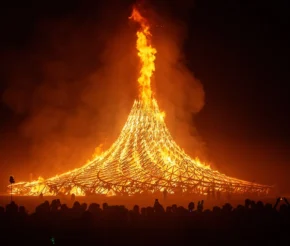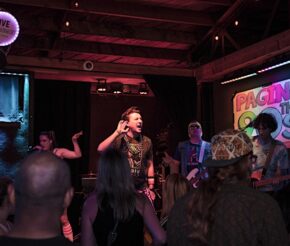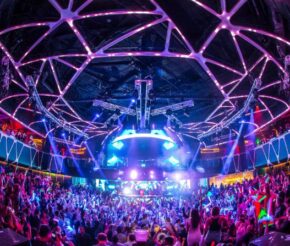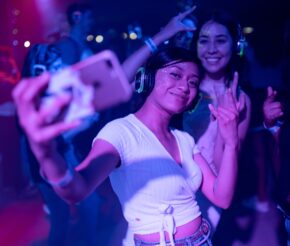- Advertise
-
Subscribe
Partying as Revolution: Behind Berlin’s Nightlife Culture

If there’s one thing people know about Berlin, it’s that its nightlife never sleeps.
The city has been celebrated as one of the best partying cities in Europe – and for a good reason. All forms of nighttime fun find home in Berlin, with everything from dark and hedonistic underground venues and techno-fuelled clubs to live-music heavy bars.
Despite being caught in the midst of two world wars and strict political regimes, Berlin had to constantly re-emerge from the ashes like a Phoenix as the capital of rebellion, wildness, and freedom.
And so it did.
Liberation after war and revolution
At the end of the First World War, Berlin found itself ready for all kinds of exciting and taboo experiences. In the years of the Weimar Republic (which, mind you, was mainly defined by the Nazi takeover), the vibrant and bustling city juxtaposed the darker years to come.

The German Revolution of 1918-19 marked the final hurrah of the German population against monarchical rule, spreading a sense of newfound freedom.
The roaring 20s truly lived up to their hype in the German capital, as extravagant and sinful nightlife emerged in full force. Brothels, scenester hangouts, discos and nightclubs saw an influx of new-and-old Berliners rush to their doors, indulging in a newfound sense of liberation.
The 1920s further gave birth to an aspect of Berlin’s entertainment scene that is still tangible and prominent today: its boom of gay and lesbian nightlife culture. LGBT-friendly venues rose in the capital, welcoming people of all sexual orientations to find shelter in dark nightclubs and bustling bars.


The rise of the LGBT community
By 1925, over 80 venues for gays and lesbians had opened, reflecting beer-soaked dives, distilleries, wine bars, dance palaces, ballrooms, and night bars. This came at a time when LGBT associations were fighting against Paragraph 175, a law that criminalised homosexual acts.
Party venues were part of the society’s act of revolt against oppressive laws. Naturally, it created an aura of solidarity and unity across the capital.
Famous German singer Claire Waldorff, whose music held lesbian undertones, writes about the era in her memoirs:
“It was the typical Berlin nightlife with its sin and its brilliance.”

Unfortunately, the newly celebrated sense of freedom was squandered under the rise of the oppressive conservative government.
The 1930s and 1940s exhibited lower spirits until the turn of the 1950s.
Despite Berlin being divided, the borders between the West and East were open for business and leisure. Big stars would come to perform at nightclubs that grew popular with American soldiers. Jazz clubs erupted with live music and all-night dancing.
Soul music would also enjoy a roaring success towards the beginning of the 1960s. At the same time, the social scene exhibited an influence of international flair brought on by Rolf Eden, a German businessman and former nightclub owner – also referred to as the Berlin playboy.
Community after division
A common consensus is this: Germany was first reunited on the dance floor.
After the Berlin Wall fell in 1989, the people of Berlin were thirsty for a sense of unity.

Although nightlife had continued on in the wake of division, shared sites and settings were a newly rediscovered aspect of the city – and Berlin’s revellers found the best ways to utilize them.
Abandoned industrial spaces transformed into bustling hubs for gloriously loud house and techno. People from the East and West found the most arbitrary locations to turn them into venues for mutual celebration.
The incredible shift in party culture took the nightlife scene away from old discos and beat-music venues into the freedom-chasing, liberating parties we know and love today.
Freedom of the Berlin nightlife
It’s no strange fact to think that partying and a reformed nightlife culture would emerge as a response to darker periods of the past.
Partying is definitely about having fun, but it’s also deeper than that. Dancing rhythmically together has long been an age-old method for humans to connect to one another. After the isolation of division, people wanted to feel united.
In a similar fashion to the outbreak of the recent party pandemonium we’re experiencing upon the lift of lockdowns today, the liberation of self-expression and self-enjoyment emerges from the shackles of feeling restricted.
And when one considers a city so heavy with historical revolutions, the onslaught of wars and political factions, it’s no surprise that Berlin’s citizens wanted to recreate their stories.





